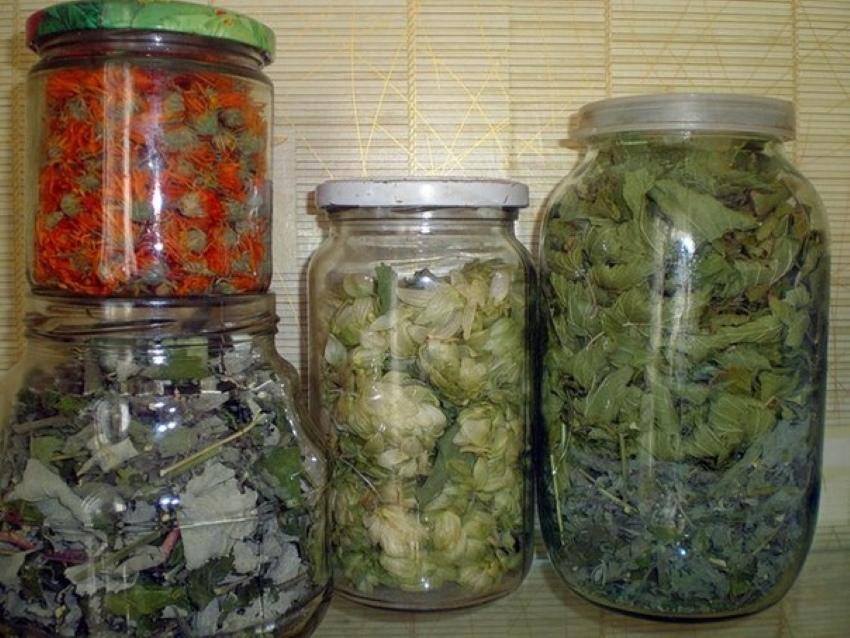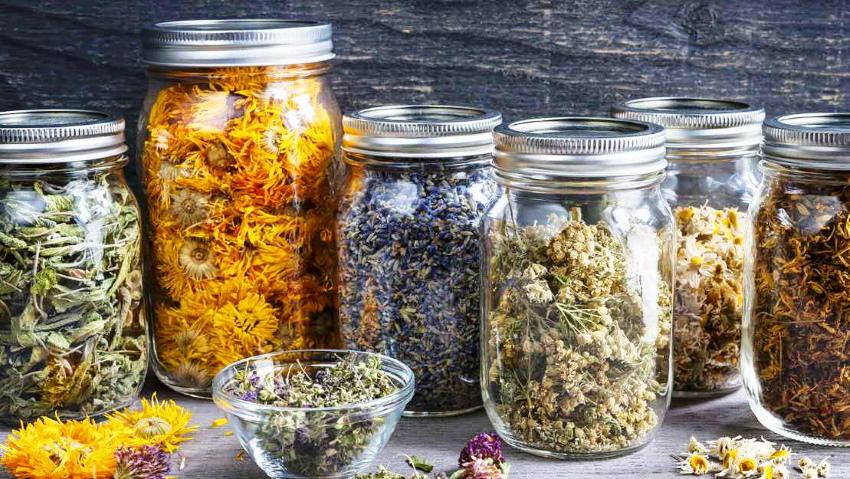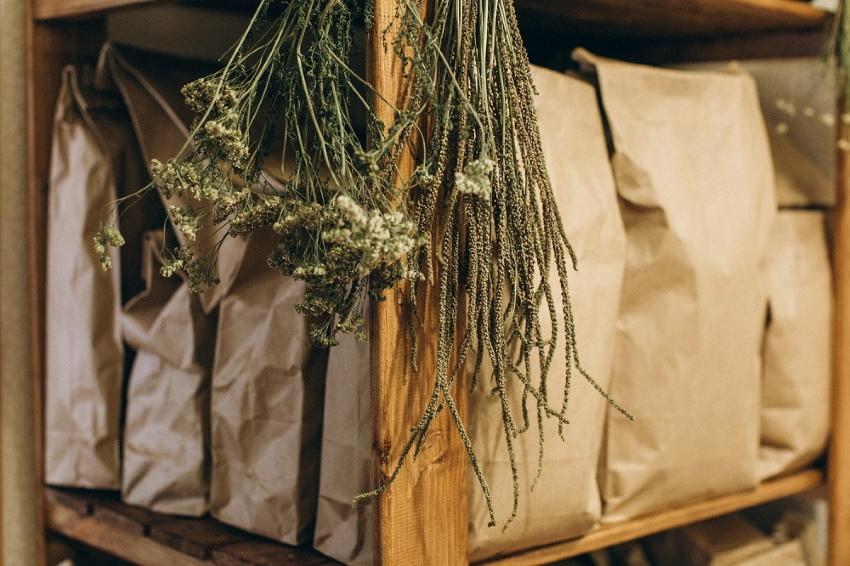How to store dry herbs so that they retain their properties
 Even if you are not an avid herbalist, there are at least a few useful plants in every home. Dried mint for tea, barberry berries for compote, chamomile and linden blossom for a medicinal decoction against colds ... In order for the useful plant raw materials harvested for future use to retain their properties, it is important to know how to store dry herbs. If placed in an unsuitable container, dried plants may deteriorate. Pests or mold begin to develop in them. And even more fragrant herbs "reward" their neighbors with their smell, and the beneficial properties are reduced if stored improperly. What can be done to prevent this from happening?
Even if you are not an avid herbalist, there are at least a few useful plants in every home. Dried mint for tea, barberry berries for compote, chamomile and linden blossom for a medicinal decoction against colds ... In order for the useful plant raw materials harvested for future use to retain their properties, it is important to know how to store dry herbs. If placed in an unsuitable container, dried plants may deteriorate. Pests or mold begin to develop in them. And even more fragrant herbs "reward" their neighbors with their smell, and the beneficial properties are reduced if stored improperly. What can be done to prevent this from happening?
How to store dry herbs - choose the appropriate container

Arrange the dried herbs in such containers:
- mistletoe, celandine, hemlock and other toxic plants - in hermetically sealed glass jars:
- also in jars with lids (glass, ceramics, tin) - herbs with a high content of essential oils:
- roots, bark, deciduous part of not very aromatic crops - in fabric bags or cardboard boxes.
If you do not have a special collection, store each plant separately. Also, sort them by taking apart. Leaves, inflorescences and roots should be stored in different containers.
Where to store
 Most herbs degrade when exposed to UV light, so avoid sunny rooms. Too high a temperature won't do any good. Keep your supplies in a cool place with no more than 18 ° C heat. It goes without saying that it should be dry there, because at high humidity, the raw materials will start to deteriorate.
Most herbs degrade when exposed to UV light, so avoid sunny rooms. Too high a temperature won't do any good. Keep your supplies in a cool place with no more than 18 ° C heat. It goes without saying that it should be dry there, because at high humidity, the raw materials will start to deteriorate.
Place the jars in your pantry or on a separate shelf in your kitchen cabinet. The bunches can be hung in the attic or dark veranda.
How much to store
 Freshly picked herbs contain most of the nutrients. On average, they can be stored until the next season, each year replacing them with a new "harvest". Buds, leaves and seeds can last for a maximum of 2 years. But the rhizome and bark are stored for up to 3 years.
Freshly picked herbs contain most of the nutrients. On average, they can be stored until the next season, each year replacing them with a new "harvest". Buds, leaves and seeds can last for a maximum of 2 years. But the rhizome and bark are stored for up to 3 years.